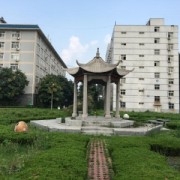小升初英语语法时态讲解与归纳
来源:江南官网app下载 时间:2023-07-23

一般现在时
一. 意义:表示经常发生的事情,动作或存在的状态
二. 构成及变化
1.be动词的变化。
肯定句:主语+be(am,is,are)+其它。如: I am a boy.我是一个男孩。
否定句:主语+ be + not +其它。如:He is not a worker.他不是工人。
一般疑问句:Be +主语+其它。 如:-Are you a student? -Yes. I am. / No, I'm not.
特殊疑问句:疑问词+一般疑问句。如:Where is my bike?
2. 行为动词的变化。
当主语为第一,二人称及复数时,助动词为do
肯定句:主语+动词原形(+其它)。如: We often play basketball after school.
否定句:主语+ don't+动词原形(+其它)。如:we don’t play basketball after school.
一般疑问句:Do +主语+动词原形+其它?
如: Do you often play basketball after school l? Yes, we do. / No, we don't.
特殊疑问句:疑问词+以do开头的一般疑问句?
如: What do you often do after school ?
当主语为第三人称单数时 ,助动词为does
肯定句:主语+动词三单式(+其它)。如: He swims well.
否定句:主语+ doesn’t+动词原形(+其它)。如:He doesn’t swim well..
一般疑问句:Does +主语+动词原形+其它。
如:Does he swim well ? Yes, he does. / No, he doesn't.
特殊疑问句:疑问词+以does开头的一般疑问句?
如: How does your father go to work?
三.第三人称单数的动词变化规则(只有在第三人称为主语的肯定句中,动词才用三单式)
(1)多数动词直接加s:runs gets likes collets takes plays climbs…….
(2)结尾是s, x, sh, ch, o,前为辅音字母,
结尾加es :watches teaches goes does washes crosses mixes brushes
(3)动词末尾y前为辅音:将y改为i加es: study→studies fly→flies carry→carries cry→cries
但在y前如果为元音则直接加s:buys says
四.时间标志:always , usually , often , sometimes ,every…
现在进行时
一.意义——当表示现在正在进行的动作或正在发生的事。
二.构成:be (am, is ,are )+动词现在分词-ing形式
肯定句: 主语 + be + 现在分词V-ing (+ 其他) I’m doing my homework now .
否定句:主语+be+not+动词-ing +其他. I’m not doing my homework now.
一般疑问句:Be+主语+动词-ing +其他?
Are you doing your home work now? Yes, I am . No , I’m not .
特殊疑问句:特殊疑问词+be+主语+动词-ing+其他?What are you doing now ?
三. 现在分词的构成:
(1)一般在动词末尾直接加ing,
(2)以不发音字母e结尾的动词,先去掉e,再加ing,
如 skate →skating make →making dance → dancing write → writing have → having
ride → riding come → coming
(3)以重读闭音节结尾的动词,中间只有一个元音字母,词尾只有一个辅音字母,应双写末尾的辅音字母,再加ing, 如: putting running beginning stopping swimming shopping jogging
sitting getting forgetting letting
四.时间标志——now,句前的look ,listen
一般过去时
一.意义:表示过去某个时间发生的事情或存在的状态.
二.构成及变化
1. Be动词在一般过去时中的变化:
am 和is在一般过去时中变为was。(was not=wasn’t)
are在一般过去时中变为were。(were not=weren’t)
带有was或were的句子,其否定、疑问的变化和is, am, are一样,即否定句在was或were后加not,一般疑问句把was或were调到句首。
2.行为动词在一般过去时中的变化:
肯定句 : 主语 + 动词的过去式 .I watched a film last Sunday .
否定句 : 主语+ didn’t + 动词原形.I didn’t watch a film last Sunday .
一般疑问句:Did + 主语 + 动词原形 ?
Did you watch a film last Sunday ? Yes, I did . No , I didn’t .
特殊疑问句:疑问词+ 以did 开头的一般疑问句 ?What did you do last Sunday ?
三、时间标志:
yesterday,
yesterday morning (afternoon, evening…)
last night (week, month, year…),
a moment ago , a week ago, three years ago…
just now,
一般将来时
一.意义:
表示将来某个时间要发生的动作或存在的状态,也表示将来经常或重复发生的动作。
二. 构成及变化:
一般将来时常用的两种结构
be going to+动词原形 : 表示打算、准备做的事或即将发生或肯定要发生的事。
shall/will+动词原形 : 表示将要发生的动作或情况,没有太多的计划性, 还用来表示意愿
1. be going to +动词原形
1.肯定句 主语+be(am /,is,/ are) going to +动词原形+其它成份
My sister is going to learn English next year. 我姐姐准备明年学英语。
2.否定句 主语+be(am / is / are)not going to +动词原形 +其它成份
I am not going to(go to)the cinema tonight. 我今天晚上不打算去看电影。
3.一般疑问句 Be (am / is / are)+主语+going to+动词原型+其它成份…?
Is your father going to play basketball with you ?No , he isn’t.你父亲打算和你去打篮球吗?不。
4.特殊疑问句 特殊疑问词(Wh-)+一般疑问句 ?
Where are you going to spend Spring Fesital.? 春节你打算在哪过?
5.注意: be going to 结构后面习惯上不跟 go , come 等表位移的动词,一般用该动词的进行时形式表示。如: He’s going to New York next week.下周他要去纽约.
2.will /shall +动词原形
(在书面语中,主语是第一人称时,常用shall ,在口语中,所有人称都可以用will)
1.肯定句 主语+will/shall+动词原形+其它成份
I (shall) write to him next week. 下周我将给他写信。
2.否定句 主语 + will /shall+ not + 动词原形 +其它成份
They won’t watch TV this evening.今天晚上他们不看电视。
3.一般疑问句 will/shall+主语 +动词原形+其它成份
Will you stay at home with us tomorrow ? 明天你和我们呆在家里好吗?
4.特殊疑问句 特殊疑问词(Wh-) +一般疑问句
When will your father be back? 你爸爸什么时侯回来?
三、附 :Shall I /we …常用来征求对方意见,而问对方是否愿意,或者表示客气的邀请,常用Will you…?他们的回答比较灵活。
1.Shall we go to the park ?
肯定Sure , let’s go .
否定 No , let’s go to the cinema.
2.Will you please come to my birthday party next week ?
肯定Yes, I will. / Sure .
否定 I’m sorry. I’m afraid I can’t.
四、时间标志:tomorrow , soon , next Monday , next year , next weekend , this afternoon , this evening ……
以上就是江南官网app下载 为大家带来的小升初英语语法时态讲解与归纳,希望能帮助到广大考生!






